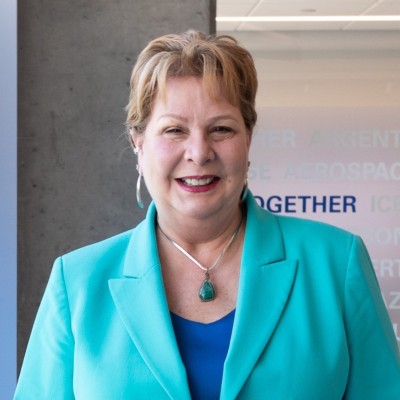Last week, members of Baltimore’s business and political leadership stated just how important the entrepreneurial economy is to making the city’s downtown an even more vibrant place to live and work.
These leaders’ reflections arrived during the annual State of Downtown Baltimore Breakfast, which the Downtown Partnership of Baltimore (DPOB) organized to report key findings about the previous year in the neighborhood and region’s life. DPOB’s presentations during the Tuesday morning event reported findings based on key data the organization tracked within a one-mile radius encompassing downtown’s employment, residential, hospitality and retail sectors.
The day featured a panel of experts in these aforementioned sectors who offered insights about both ongoing and forthcoming revitalization efforts. DPOB leaders also followed up on these thoughts individually; for instance, President Shelonda Stokes underscored these projects’ work by saying just how crucial any tech work is to the city’s future.
“Technology is key to the city’s revitalization and the future of entrepreneurship,” she said.
Lauren Hamilton, the DPOB’s chief marketing officer, emphasized the Downtown Core’s transformation from domination by traditional finance, professional services, and medical industries to a more inclusive and diverse economic landscape. Hamilton described the IKE Smart City Kiosks as an innovative technology that has made downtown Baltimore more accessible by providing free WiFi and showcasing the city’s public transportation system. She also shared that 35 more kiosks are coming soon, further expanding the connectivity and accessibility of Downtown Baltimore.
The existing IKE Smart City Kiosk locations include:
- Pratt Street and Light Plaza
- Power Plant Live!
- East Pratt Street and Commerce Street
- Charles Street and Saratoga Street
- East Pratt Street and Market Place
- Cathedral Street and Mulberry Street
- Camden Yards at Paca Street
Stokes also referenced Downtown BOOST, an initiative designed to support Black and brown entrepreneurs with concerted business support. She described it as crucial to helping underrepresented and marginalized entrepreneurs of color thrive at the heart of Baltimore’s economy — especially after the challenges posed by the COVID-19 pandemic.
Through all these approaches, Hamilton emphasized the importance of staying true to the city’s unique character while reimagining downtown and the city as a whole.
“Authenticity is in the fabric of Baltimore,” Hamilton said. “If we are not true to this, if we follow the exact blueprints of other cities, we will lose what makes us unique. The feedback from tourists and visitors we often hear is how authentic and proud of a city we are. Remaining true to this is key to the reimagining of our downtown, and our city’s ethos as a whole.”
Authenticity is in the fabric of Baltimore.Lauren Hamilton Downtown Partnership of Baltimore
This sentiment was shared during the earlier panel, in which Haborplace developer David Bramble referred to Baltimore’s resilience as its “grit,” making it a potential model for other cities aiming to establish diverse and inclusive urban economies.
Stokes and her colleagues aim to present this message as far and wide as possible. DPOB recently presented its first-year BOOST program findings at the International Downtown Association conference in Canada, hoping to inspire other downtowns to adopt similar initiatives that promote equity. Stokes expressed excitement about this opportunity to deliberately support Black and brown businesses, and she looks forward to the economy’s newly reimagined Harborplace — which she hoped will bring small businesses together while integrating helpful technology.
Join the conversation!
Find news, events, jobs and people who share your interests on Technical.ly's open community Slack

This Black gaming advocate has a mission to transform education through esports

'Be bold': This digital innovation and business strategist urges fellow women leaders to be their authentic selves

Baltimore Power Moves: Open Works and Coppin State partner for a new makerspace, degree and tech transfer program


